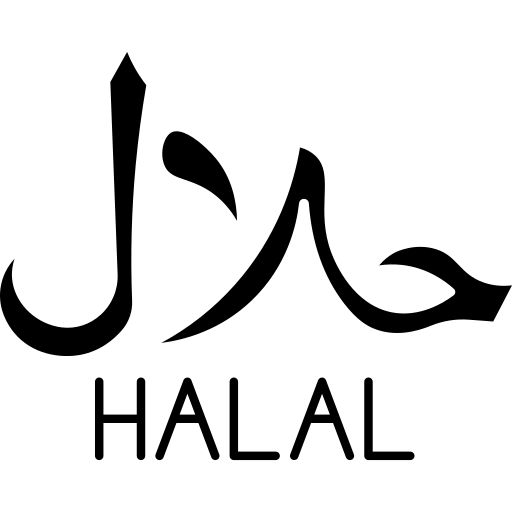For Muslim consumers, understanding the Halal status of food products is crucial. While many ingredients are straightforward, food additives, often identified by E-codes, can be complex. Their Halal status depends heavily on their source and manufacturing process, which may not always be apparent from the E-code alone.
This guide aims to simplify this complexity by categorizing common E-codes into three groups: Halal-Safe, Mushbooh (Doubtful), and Haram (Forbidden). It\'s important to note that for Mushbooh additives, further investigation or Halal certification is recommended.
Halal-Safe E-codes
These E-codes are generally considered Halal as they are derived from Halal sources or are synthetic and do not involve any Haram substances in their production.
E100 (Curcumin/Turmeric)
Use: Color. Status: Halal if powder or granular. Mushbooh if liquid (solvent must be Halal). Haram if hidden ingredient is pork fat-based emulsifier in dry mix.
E102 (Tartrazine)
Use: Color. Status: Halal if used as 100% dry color. Mushbooh if used as liquid color (solvent must be Halal).
E110 (Sunset Yellow FCF / Orange Yellow S)
Use: Color. Status: Halal if used as 100% dry color. Mushbooh if used as liquid color (solvent must be Halal).
E150(a-d) (Caramel Color/with chemicals)
Use: Color. Status: Halal.
E160b (Annatto, Bixin, Norbixin)
Use: Color – Carotene. Status: Halal.
E170 (Calcium Carbonate (Chalk))
Use: Color Inorganic. Status: Halal if obtained from rock mineral and used as 100% dry powder or granular. Mushbooh if liquid (solvent must be Halal).
E171 (Titanium Dioxide)
Use: Color Inorganic. Status: Halal.
E172 (Iron Oxides and Hydroxides)
Use: Color Inorganic. Status: Halal.
E173 (Aluminium)
Use: Color Inorganic. Status: Halal.
E174 (Silver)
Use: Color Inorganic. Status: Halal.
E175 (Gold)
Use: Color Inorganic. Status: Halal.
Mushbooh (Doubtful) E-codes
These E-codes have a doubtful status because their origin can be either Halal or Haram, or their processing might involve Haram substances. Consumers should exercise caution and seek further clarification or avoid products containing these additives unless a Halal certification is present.
E101 (Riboflavin (Vitamin B2))
Use: Color. Status: Mushbooh (Haram if from pork liver & Kidney, Halal if 100% plant material).
E132 (Indigo Carmine / Idigotine)
Use: Color. Status: Halal if used as 100% synthetic color, but Haram if pork glycerin is added as a solvent.
E140 (Chlorophyll)
Use: Color. Status: Halal if 100% powder or if water or vegetable oil was used as a solvent.
E141 (Copper Complex of Chlorophyll)
Use: Color. Status: Halal if 100% powder or if water or vegetable oil was used as a solvent.
E422 (Glycerol / Glycerin / Glycerine)
Use: Solvent, humectant. Status: Mushbooh (Haram if obtained from pork or non-Halal meat sources).
E470 to E483 (Emulsifiers)
Use: Emulsifiers. Status: Mushbooh (Haram if obtained from pork or non-Halal sources).
Haram (Forbidden) E-codes
These E-codes are considered Haram as they are derived from sources explicitly forbidden in Islam, such as pork, alcohol, or insects, or their production process involves Haram substances.
E120 (Cochineal / Carminic Acid)
Use: Red Color. Status: Haram (derived from insects).
E441 (Gelatine)
Use: Thickener, gelling agent. Status: Haram (derived from the bones and/or hides of cattle and/or pigs, unless specifically Halal certified).
E542 (Edible Bone Phosphate)
Use: Anti-caking agent. Status: Haram (an extract from animal bones, unless specifically Halal certified).
E904 (Shellac)
Use: Glazing agent. Status: Haram (a resin from the lac insect).
Important Note for Consumers
This list is not exhaustive, and the Halal status of an E-code can vary based on the specific source and manufacturing process. Always look for official Halal certification logos on products, especially for Mushbooh additives. When in doubt, it is best to avoid the product or consult with a recognized Halal authority.
References and Sources
[1] International Halal Certification: https://international-halal.com/ecodes/
[2] E-Code Halal Check: https://ecodehalalcheck.com/
[3] Halal Authority India: https://www.halalauthorityindia.com/pages/ecodes/6198ecodes.pdf
[4] World of Islam - FOOD INGREDIENTS NUMBERS (e-numbers): https://special.worldofislam.info/Food/numbers.html
